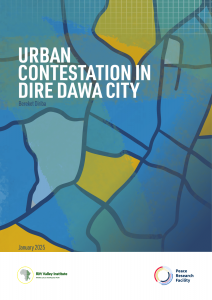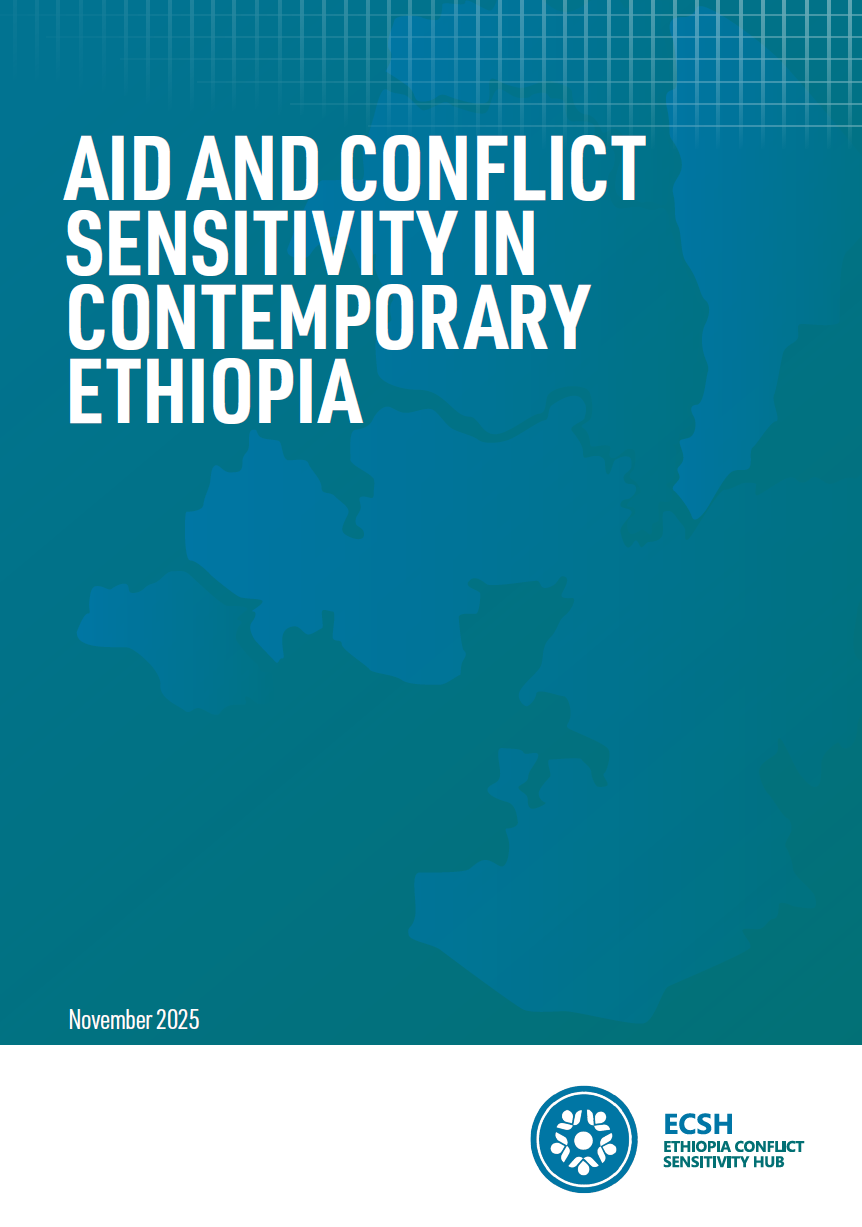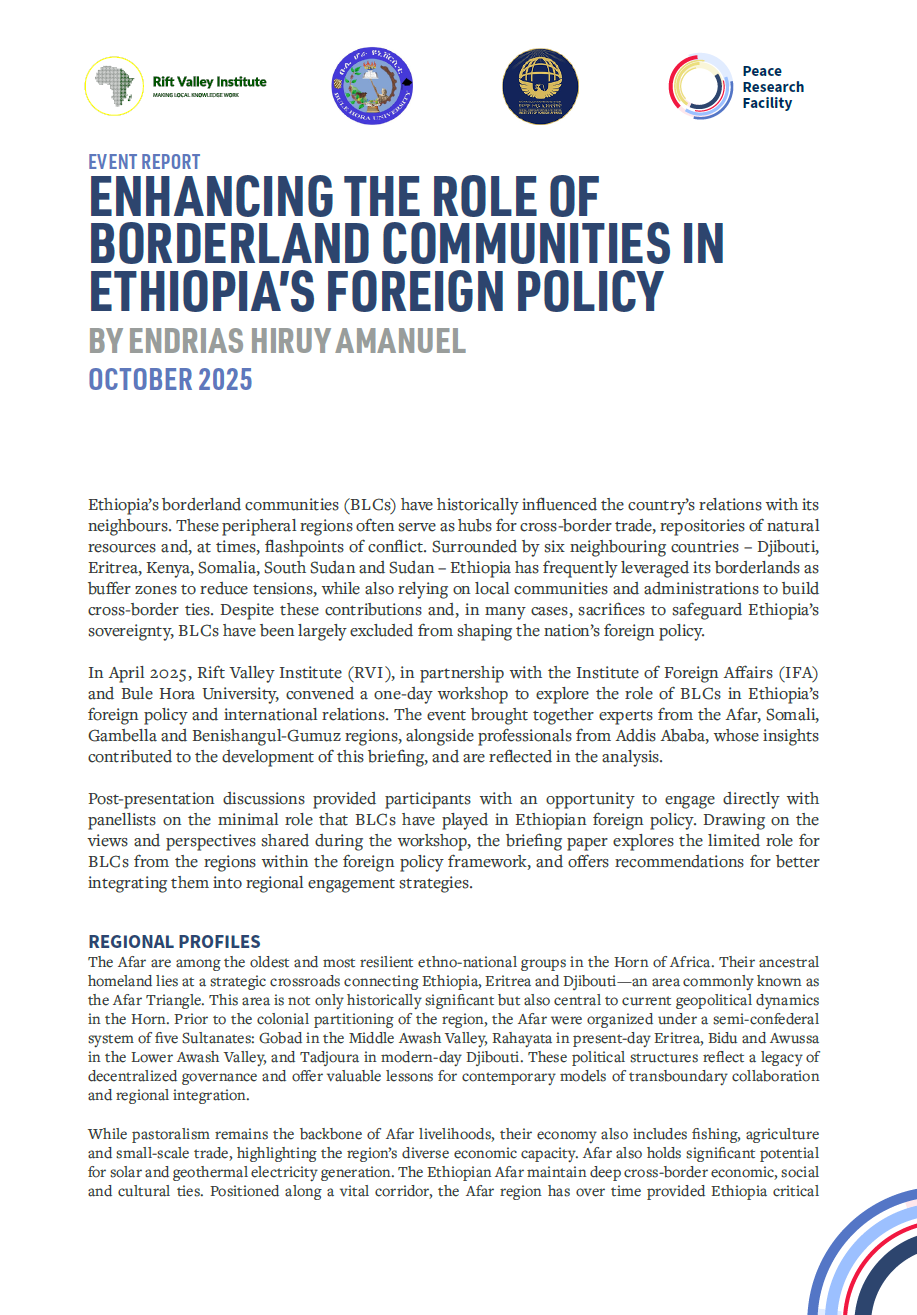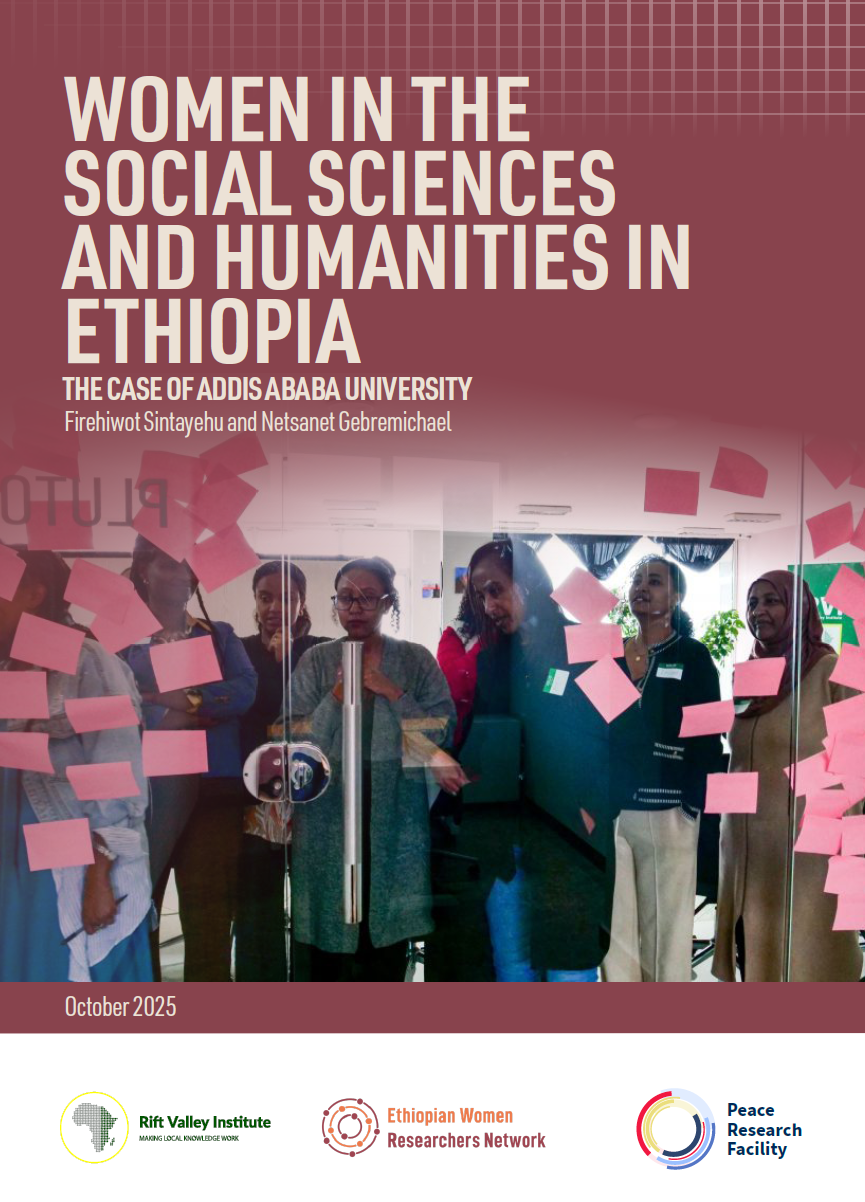Dire Dawa, the second-most populous city in Ethiopia, is known as a melting pot of ethnic, language and religious groups in the east of the country. In the aftermath of the 2018 national political transition, however, the city, which is popular with visitors, experienced ethnic and religious conflicts in the following two years. This revealed underlying tensions among the city’s multiple ethnic and religious groups.
From 2020 to 2023, various developments have contributed to the restoration of relative peace in Dire Dawa compared to other parts of Ethiopia, two of which are especially significant. First, a government crackdown on opposition political forces, including dismantling the informal youth group structures that were at the forefront of the conflicts. Second, the change in political leadership of the city administration, which now largely consists of actors born and raised in Dire Dawa.
Still, this is a fragile peace. Competing group interests in Dire Dawa remain unaddressed, with the potential to burst into conflict in response to changes in the political and security arrangements in the city, surrounding regions and even neighbouring countries.
Contestation in Dire Dawa involves a diverse range of political, economic and social actors. The main ones are the Dire Dawa administration, the federal government, Oromia region, Somali region, the Shinile zone (in Somali region), traditional institutions of ugaz (king) and Abbaa gada (lit. father of the gada; the most senior elected Oromo leadership position), and the Dire Dawa city inter-religious council and its member institutions.
Also heavily involved are social institutions, especially those that offer community support such as eder (ʼədərə; እድር) and afosha (the equivalent of eder in Afaan Oromo), as well as traditional financial unions like equb (ʼəqubə; እቁብ) and city residents
Economic actors playing a critical include those operating in the Dire Dawa Industrial Park and Dire Dawa Free Trade Zone, cement factories, land and investment bureaus, Bajaj (motor trike) drivers, labour associations (ċañənaʼawəraǧə; ጫኝና ኣውራጅ), small businesses, informal traders and contraband dealers.
There are five main layers of contestation. First, the leading cause of disputes remains the decades-old ownership claims and counterclaims between the Oromo and Somali groups and their political forces. Despite adopting the Dire Dawa City Charter, which aimed to resolve the dispute between Oromia and Somali regions over the city, contestation between members of these two groups continues to shape and affect intergroup relations and the distribution of political power and resources in the city. This is mainly reflected in disputes over administrative boundaries, land use and settlements.
Second, contestation between the main religious groups in the city is impacting both intergroup relations and settlement patterns. The religious composition of officials at the city administration and kebele (lowest administrative division) levels is considered to be disproportionate given the religious makeup of the population.
Partly due to the absence of inclusive conflict resolution and reconciliation processes in the wake of the 2019 and 2020 violence, new settlement patterns are leading to increasingly homogeneous neighbourhoods. Hindering intergroup interactions and exacerbating differences, this trend makes existing fault lines more combustible. Disputes among and between members of different ethnic or religious groups can quickly deteriorate into identity-based conflicts involving larger numbers of people.
Third, language, culture and public spaces have emerged as a focus of contestation in Dire Dawa. The exclusion of Afaan Oromo as an official language of the city administration affects Oromo participation in economic and political life, as well as limits cultural development and educational opportunities. Hence, Oromo residents continue to demand formal recognition for their language alongside Amharic. The symbolic representation of Oromo figures in public spaces around the city has also sparked debate and suspicion among other ethnic groups.
A notable example of contestation over public spaces is the recent renaming of Millennium Park to Ali Birra Park, after a prominent Oromo musician. This city administration decision sparked fear among non-Oromo residents, who saw the move as potentially instrumental in consolidating Oromo political forces in support of their ownership claim over Dire Dawa.
The fourth aspect of urban contestation in Dire Dawa involves disputes between urban residents and the city administration. The residents resent that the Dire Dawa City Charter and the informal 40:40:20 power-sharing agreement deprive them of their right to proportional representation. Specifically, as indicators of their marginalization they point to the disproportionate distribution of council seats between urban and rural kebeles, and the unequal representation of religious groups and residents in the city administration.
Fifth, Dire Dawa is facing a growing challenge with the influx of migrants from nearby rural areas in the Hararghe zones in Oromia and from other parts of Ethiopia. Economic migrants compete with local youths for limited job opportunities. Drug abuse and increased criminal activity are seen as linked to the influx. In some parts of the city, informal settlements pose security challenges. They have also become politically sensitive for the city administration as attempts at forceful eviction could spark conflict.
Probing these five layers of contestation is crucial for better understanding the nature of the key actors involved and the shifting relations between them. In turn, this knowledge can serve to inform policymakers as they address existing fault lines and potential conflict flashpoints in the city, and work to contain the impact of regional tensions on the fragile situation in Dire Dawa.
Ethiopia is suffering from serious conflicts in Oromia and Amhara regions, and tensions in the Horn of Africa are on the rise following the January 2024 Ethiopia–Somaliland memorandum of understanding. These wider problems shape intergroup relations in the city, just as conflicts and tensions in Dire Dawa risk spilling out into neighbouring regions and countries.
Understanding these mutually reinforcing dynamics is of paramount importance for maintaining peace and mitigating violence in Dire Dawa, across eastern Ethiopia and in the Horn of Africa.
This report was written for the Ethiopia Peace Research Facility (PRF) and is part of its Knowledge for Peace (K4P) series on contested urban spaces. The PRF is an independent facility combining timely analysis on peace and conflict from Ethiopian experts with support for conflict-sensitive programming in the country. It is managed by the Rift Valley Institute (RVI) and funded by the UK government.
Please find an Amharic version of the summary here




